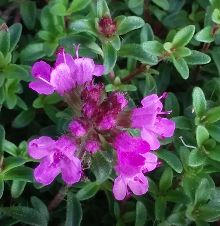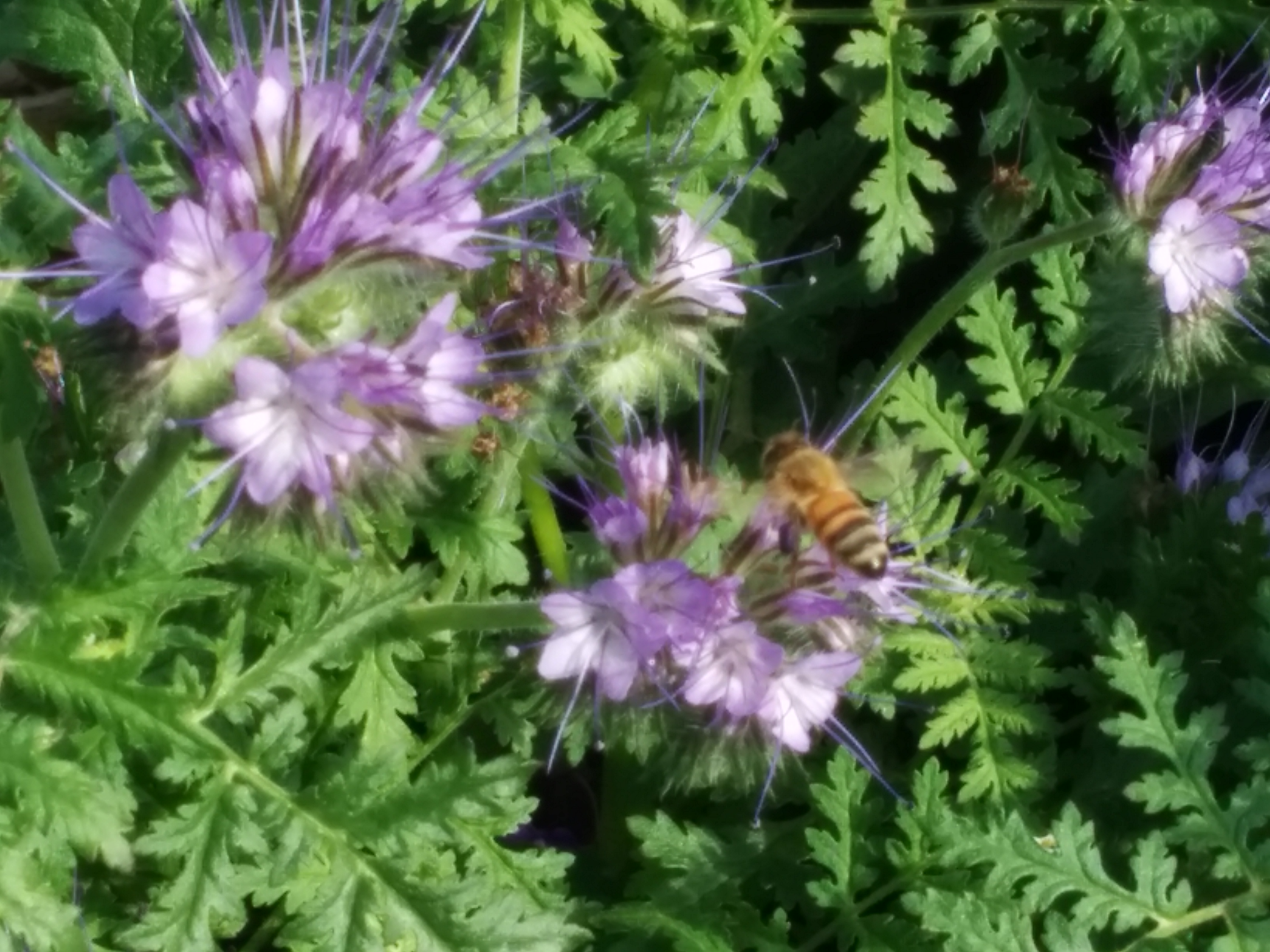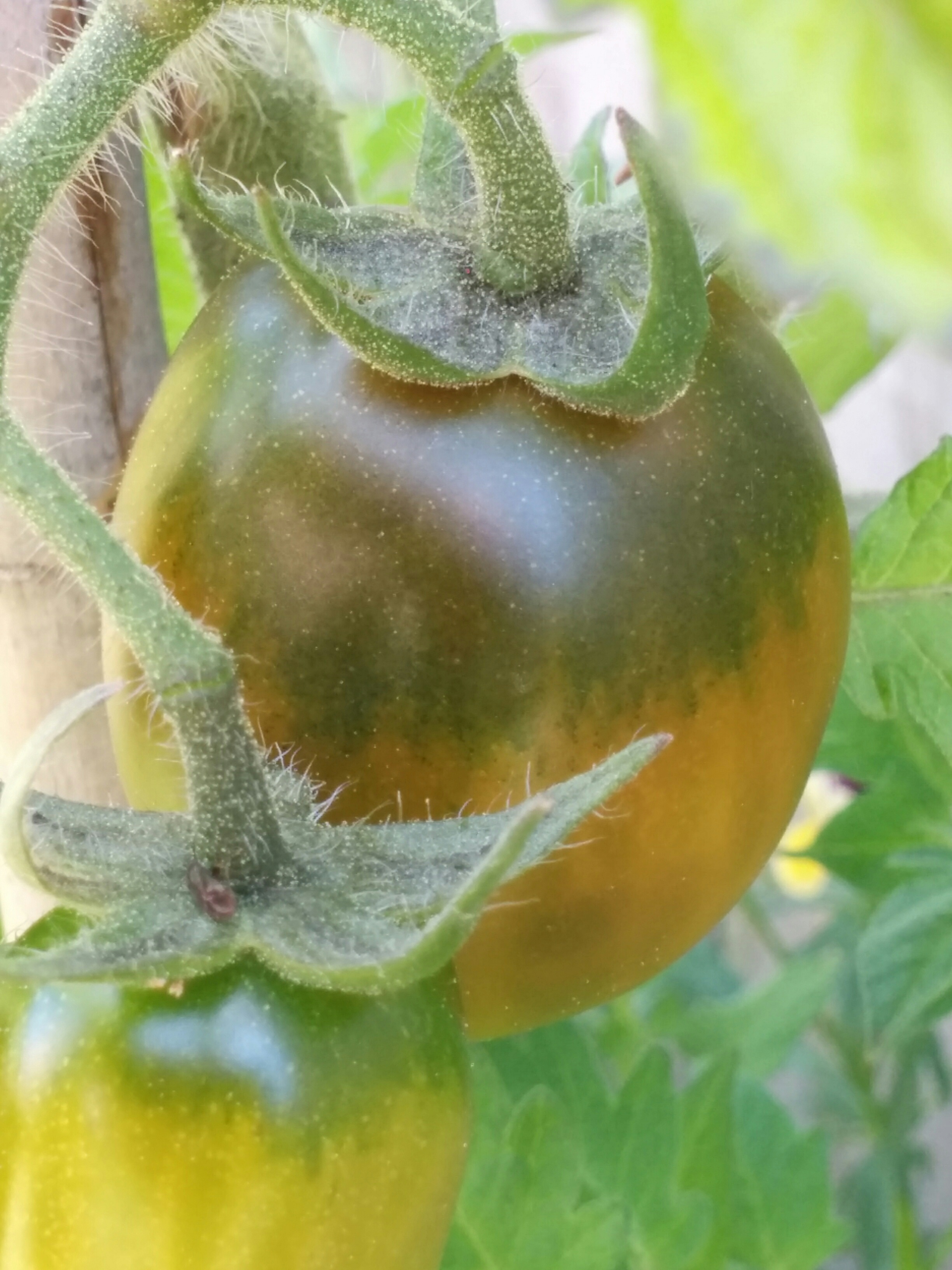Welcome to the Week 47 edition of Five at 5.
This week I’m super excited about some of my heirloom tomato plants that are fruiting, and even starting to ripen with colour! I also look at a creeping Thyme in my cottage garden which makes a groundcover around my stepping stones, the Tomatillo that are making beautiful Chinese-lantern like fruit at the moment, and two different tansy plants that are looking fabulous – common tansy and lacy tansy. Enjoy!
- Creeping Thyme, Mother-of-Thyme (Thymus serepyllum),
- Tomatillo, Grande Verde (Physalis ixocarpa),
- Tansy, Common (Tanacetum vulgare),
- Tansy, Blue or Lacy (Phacelia tanacetifolium)
- Tomatoes (Lycopersicon esculentum).
Click on link above to view YouTube video
1. Creeping Thyme

From mid-spring through most of summer, the carpet of deep green that grow around some of my cottage garden pathway, erupts with bright pink blooms – much to my delight and that of the bees!
This beautiful creeping thyme is easy to grow, and spreads relatively fast when its in a prime spot. You can use it just like common thyme – the leaves being a great addition to soups, stews, Mediterranean herb mixes, and it goes particularly well with zucchini, onions, and beetroot.
Medicinally, the leaves are also used like common thyme, they are strongly antiseptic and disinfectant. A gargle of thyme helps with sore throats and mouth sores, while a thyme tea can help with colds and flu.
Growing Creeping Thyme
You can grow this thyme from seed although the seed is not readily available, and because the genus of thyme naturally hybridizes easily, it is often better to get divisions or cuttings from an existing plant.
Use creeping thyme as a border plant or let it spill over in containers, it looks great in rock gardens, or grown as a ground cover. Preferring a full sun position, it tolerates drought and requires a sandy soil. It makes a good plant for between paving stones as it tolerates light treading.
It is perennial, and once established should be a beautiful permanent plant in your garden. Just be wary of wet winters like we get in Auckland- no thyme does well sitting in cold and wet soil for prolonged periods… To overcome this, take a cutting or division in late autumn and cultivate in a pot in case you need to re-establish your plant after winter. You can also add gravel around the edges of your thyme plants to mitigate the effects of water-logging.
Make a bee attracting basket
Plant your creeping thyme in a hanging basket with other bee-attracting flowers such as chamomile, calendula, alyssum, nasturtium, or even with other Mediterranean edible herbs that are noted for flowers that attract wildlife – sage, rosemary and oregano.
2. Tomatillo

Tomatillo means little tomato, and indeed, the fruit of these plants were, just like tomatoes, an important food for Mayan and Aztecs, and today still play an important part in Mexican cuisine.
With their tart flavour, and firmer-than-tomato flesh, they are delicious in sauces, stews, curries or eaten fresh in salads. High in pectin, they make delicious jams and jellies too. Tomatillo is a key ingredient in a true and proper salsa verde.
<<<PLEASE NOTE>>> All parts of the plant, except for the ripe berries are noted as poisonous.
Growing tomatillo
Tomatillo is also known as green tomato, or Mexican husk tomato, and is an annual plant that can reach up to a meter in height. They have a naturally sprawling habit, but can be contained with grow cages or stakes.
Tomatillo can be started from seeds, and their cultivation requirement is more or less the same as that of tomatoes – doing well in warmer climates, planted in rich and light soils that are kept evenly moist, and preferring a sunny position.
Many cultivars exist, from green fruiting, to golden, and even purple ones. The latter being slightly sweeter when fully ripe.
It is important to grow more than one tomatillo to ensure a good fruit set as the plants do better with cross pollination.
Making salsa verde
Ingredients
- 700g of green, ripe tomatillo, papery husk removed and rinsed
- 1/2 cup of chopped onion
- 2 to 4 cloves of garlic, or to taste
- 1/2 cup of packed coriander leaves (cilantro/dahnia)
- 2 Tbsp of lime juice (fresh is best!)
- 2 Chillies, or to taste (either Jalapeno or Serrano are used traditionally
Method
- Boil, pan fry, or broil (grill) the tomatillo (at least 5 minutes)
- Pulse the tomatillo in a blender until smooth
- Add all the other ingredients and pulse until well combined.
- Enjoy!
3. Tansy – lacy, or blue

Beautiful lacy tansy, or phacelia, is flowering now in my pollinator beds, and I’m overjoyed with how well it works as a bee and bumblebee attracting plant, and how absolutely gorgeous it looks in full flower!
The Americans know it as Fiddleneck because of the shape of the flowerheads.
The clusters of lavender-blue bell-shaped flowers rise above the tansy-like foliage, making it a very attractive plant. It blooms continually for up to 5 months, from mid spring, providing nectar and pollen to foraging insects.
This fast growing annual has a relatively shallow root system, and can also be used as a cover crop and green manure. An all-round star in the organic garden.
Growing Phacelia
For all its beauty, it is quite easy to grow – preferring a full sun position in sandy, rocky and light soils. A very giving plant for a “forgotten” corner. It’s disease free and drought tolerant, and does well in a mixed flower border or in the vegetable garden.
Best grown from seed, the plant self-seeds freely.
4. Tansy, common

There was a time (16th century) that Tansy was given as an absolute necessity in the herb and food garden. These days, although it is still used as an insect repellent, it is not that common in household gardens.
The name Golden Buttons that it is sometimes known by refers to the pretty flat-topped button-like yellow flowers that rise above the ferny foliage in summer.
As an old edible plant (please note that it may have toxic effects if used in great quantities and is not generally advised for internal use these days) – it was used to flavour cakes, omelettes, and other foods, especially during Lenten. It very much used as a medicinal plant – strongly vermifuge and a common remedy for intestinal parasites, but also noted for fevers, rheumatism, failing digestion and open sores. It even had some cosmetic applications – a face wash of tansy is said to refresh and lighten skin.
Quite effective to keep insects at bay – it was tested against mosquitoes and flies – it can be grown to repel pests in the garden, and dried, the leaves can be added to insect repellent sachets for the house.
Growing tansy
Tansy is a fast growing perennial, growing up to 1m tall, but spreading to over 1.5m. Grown easily from fresh seeds, or divisions at almost any time during the growing season.
Be careful where you site your tansy as it spreads quite aggressively and is difficult to eradicate once well established.
Tansy grows well in almost any soil, and prefers a full sun position and can tolerate wind.
5. Tomatoes

Almost time to harvest tomatoes!
For more on previous articles on growing tomatotes, see:
1. Tomato Terminology 1 : Hybrid vs Heirloom
2. Tomato Terminology 2: Determinate vs Indeterminate
3. Tomato Terminology 3: Tomato Shapes and Sizes
Tomatoes are one of my favourite fruits (vegetables) to grow. I am a bit of an heirloom tomato collector – my seed variety now over 100 different tomatoes – in every shape, colour and taste imaginable in the tomato world.
I generally find tomatoes easy to grow, as long as they are fed every 7-14 days, kept evenly moist, and situated in a sunny position. Taking laterals off is sometimes advocated, although I’ve had better fruit set and healthier plants the more I leave them be…
Here’s my top ten tips on growing optimal tomatoes.
Thank you!
I hope you’ve enjoyed this week’s walk through my garden. See you back next week for more Five at 5.
Notes:
1. I do not run affiliate programs, if I mention a product or a nursery in my posts, it is without monetary or any other incentive from them to do so, and because I either believe in their product, or it was the only place to get what I needed.
